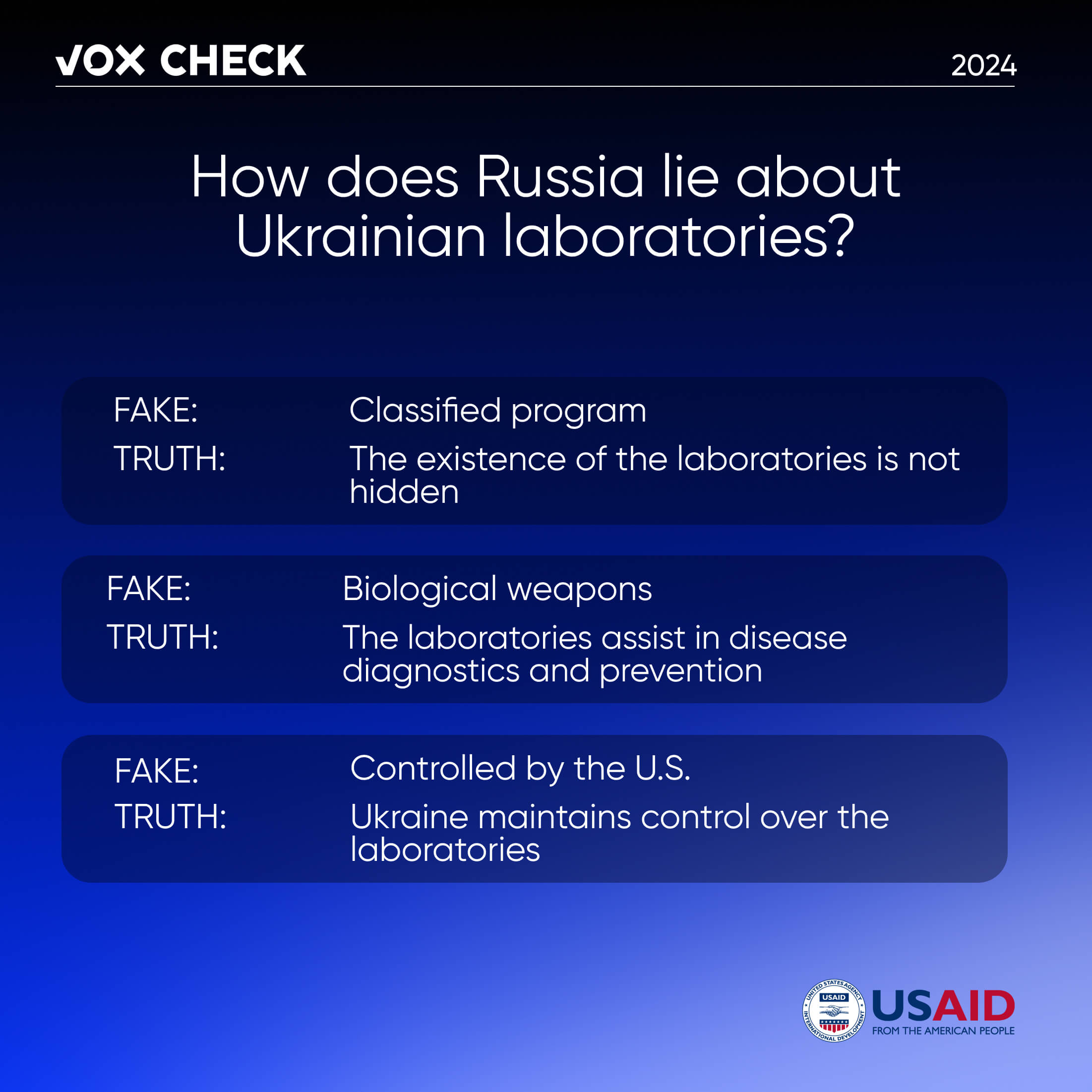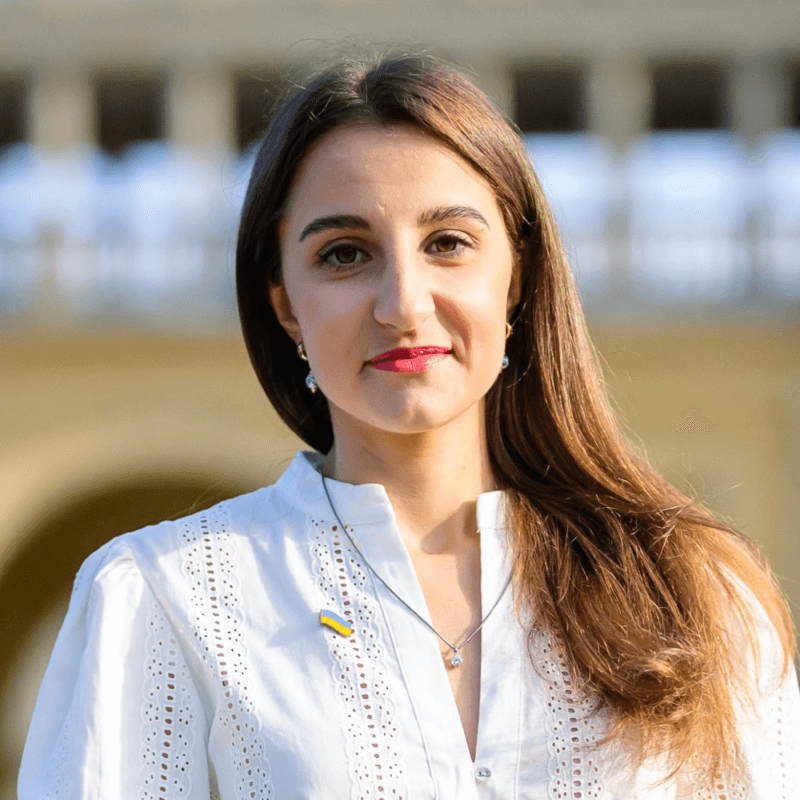Kremlin propagandists systematically attempt to divert attention from their own crimes and shift responsibility for their attack on Ukraine. To do so, they produce various fake stories. For example, they claim that “American biolabs” allegedly spread diseases and conduct “experiments” on civilians. This narrative is not new; Russians have used it since 2014 to justify aggression under the guise of “protection from biological threats”.
With the support of the USAID Health Reform Support project, VoxCheck analyzes and refutes public health narratives spread in the information space of Ukraine, Belarus, and russia on a weekly basis.
Propagandists are disseminating a statement by Russian “expert” Yuriy Nikulin, claiming that the Central Reference Laboratory in the city of Merefa, Kharkiv region, is allegedly a critical point in a “biological” research program financed by the United States. From 2019 to 2021, “American scientists” at the Merefa laboratory supposedly conducted tests of potentially dangerous biological agents on patients of Kharkiv Psychiatric Hospital No. 3. While Russians claim that equipment and materials were supposedly evacuated from Merefa three years ago, they argue that traces of “American biolabs” can still be found there.
Screenshot of the post
What’s the reality?
In 2013, there were indeed news reports about plans to build a laboratory in Merefa based on the Institute of Experimental and Clinical Veterinary Medicine. However, local residents opposed the construction. According to journalists, locals filed complaints to government agencies and, after watching a Russian documentary titled Contagion, expressed concerns that the U.S. Department of Defense intended to use them for “experiments in a biolab”. However, the institute’s then-director, Borys Stehnii, clarified that the laboratory posed no threat to humans as its purpose was to study animal diseases such as African swine fever. Stehniy noted that the institute had already been studying animal diseases, but the planned laboratory would have had a higher level of safety.
Despite these plans, in November 2013, the then-head of the Kharkiv Regional Administration, Mykhailo Dobkin, announced that the bacteriological laboratory would not be built in Merefa, emphasizing that it would not have posed any threat to human life. No discussions about resuming construction have taken place since then. Thus, Russian claims about the laboratory are based on a facility that does not exist. Similarly, there is no evidence that any laboratory in the Kharkiv region conducted “experiments” on patients at Kharkiv Regional Clinical Psychiatric Hospital No. 3.
Furthermore, the U.S. has been helping Ukraine control dangerous pathogens and prevent their spread. In 2005, Ukraine and the U.S. signed an agreement to support Ukrainian laboratories in identifying and reporting potential disease outbreaks before they become threats. These laboratories are managed by the Ukrainian government, with U.S. assistance. Since the program’s inception, the U.S. has supported 46 such laboratories, investing at least $200 million. Notably, until 2014, the U.S. also collaborated with Russian laboratories.

Source: U.S. Department of Defense’s Defense Threat Reduction Agency
These laboratories do not produce viruses or conduct illegal experiments on humans. Their main objectives under the Biological Threat Reduction Program include scientific research, pathogen and toxin control, improving diagnostics, and preventing infectious diseases.
In previous issues, we have debunked fakes about alleged “American laboratories” and “experiments” on humans purportedly conducted by Ukrainian doctors in Mariupol between 2006 and 2016.
By promoting the “American biolabs” narrative, Russians aim to demonize the U.S., portray it as a global aggressor, and justify the invasion of Ukraine as a “response to biological threats”. The core of this narrative remains largely unchanged. Since the full-scale war began, Russian propagandists have regularly spread such claims, varying only the names of laboratories and regions allegedly involved in “dangerous research”.
This information piece was produced with the assistance of the United States Agency for International Development (USAID), provided on behalf of the people of the United States of America. This article’s content, which does not necessarily reflect the views of USAID, the United States Government, is the sole responsibility of Deloitte Consulting under contract #72012118C00001.

Фото: depositphotos.com/ua
Attention
The author doesn`t work for, consult to, own shares in or receive funding from any company or organization that would benefit from this article, and have no relevant affiliations

